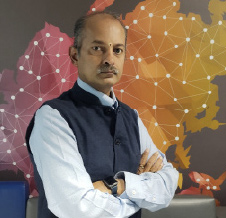Breaking News

NPCI’s Chief Risk Officer, Viswanath Krishnamurthy, said only customer risk scores—not full data—will be shared between NPCI and banks to protect user privacy.
In a significant move to strengthen UPI security and tackle rising UPI fraud, the National Payments Corporation of India (NPCI) is piloting a new ‘Federated Model’ in collaboration with 3–4 public and private sector banks. This innovative system is part of NPCI’s broader digital payment security strategy and represents a major leap in using AI and machine learning to detect and prevent fraudulent activities in UPI transactions.
The NPCI Federated Model is designed to enhance payment security without compromising user privacy. Instead of sharing complete user data, only customer risk scores are exchanged between NPCI and participating banks. These scores are computed based on different sets of information—banks use customer-specific details, while NPCI analyses device behavior and transaction patterns across the UPI network.
Viswanath Krishnamurthy, NPCI’s Chief Risk Officer, emphasized that the model is built to detect suspicious activity while also minimizing false positives—ensuring that genuine transactions are not mistakenly flagged. This balance is crucial to maintaining user trust and the seamless experience that digital payments like UPI offer.
With India witnessing exponential growth in UPI usage, securing these transactions has become more important than ever. From small vendors to large enterprises, UPI has become the backbone of digital payments in the country. But with convenience has come a surge in fraud cases, prompting the need for more advanced fraud detection and UPI safety mechanisms.
The NPCI initiative is not just about preventing fraud—it’s about building a smarter and more resilient UPI infrastructure. By using a collaborative approach between banks and NPCI, the Federated Model encourages real-time sharing of risk insights while keeping customer data secure.
As this model evolves, it’s expected to become a cornerstone in fraud prevention and UPI innovation, ensuring a safer environment for all users. With initiatives like this, NPCI is showing how strategic innovation and technology-driven solutions can elevate secure UPI systems and sustain the growth of digital payments in India.
The NPCI Federated Model is designed to enhance payment security without compromising user privacy. Instead of sharing complete user data, only customer risk scores are exchanged between NPCI and participating banks. These scores are computed based on different sets of information—banks use customer-specific details, while NPCI analyses device behavior and transaction patterns across the UPI network.
Viswanath Krishnamurthy, NPCI’s Chief Risk Officer, emphasized that the model is built to detect suspicious activity while also minimizing false positives—ensuring that genuine transactions are not mistakenly flagged. This balance is crucial to maintaining user trust and the seamless experience that digital payments like UPI offer.
With India witnessing exponential growth in UPI usage, securing these transactions has become more important than ever. From small vendors to large enterprises, UPI has become the backbone of digital payments in the country. But with convenience has come a surge in fraud cases, prompting the need for more advanced fraud detection and UPI safety mechanisms.
The NPCI initiative is not just about preventing fraud—it’s about building a smarter and more resilient UPI infrastructure. By using a collaborative approach between banks and NPCI, the Federated Model encourages real-time sharing of risk insights while keeping customer data secure.
As this model evolves, it’s expected to become a cornerstone in fraud prevention and UPI innovation, ensuring a safer environment for all users. With initiatives like this, NPCI is showing how strategic innovation and technology-driven solutions can elevate secure UPI systems and sustain the growth of digital payments in India.
See What’s Next in Tech With the Fast Forward Newsletter
Tweets From @varindiamag
Nothing to see here - yet
When they Tweet, their Tweets will show up here.



























